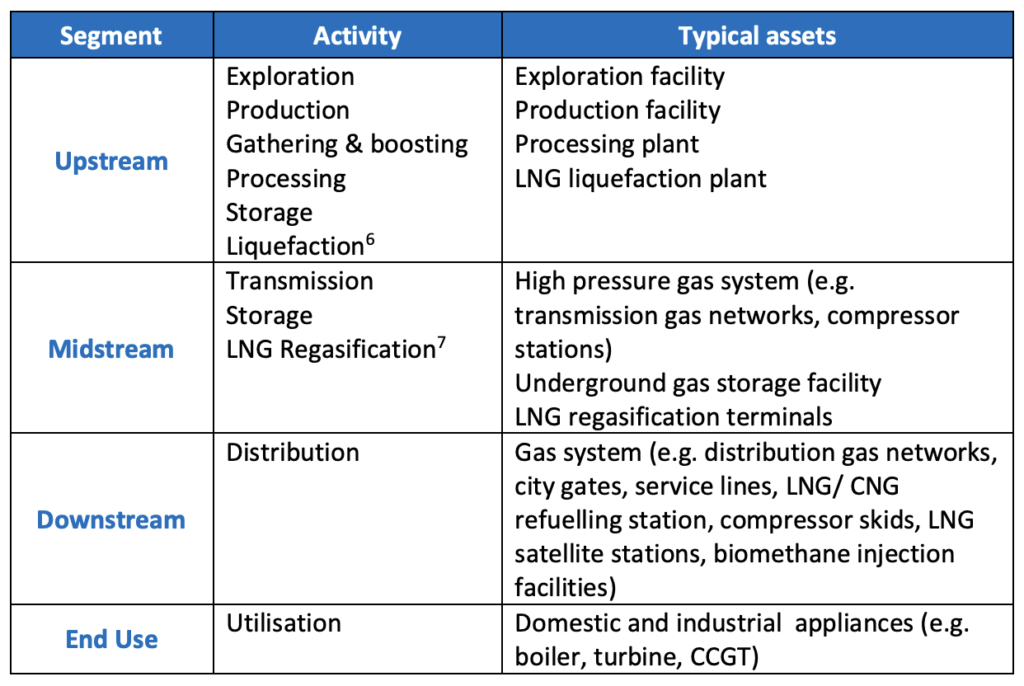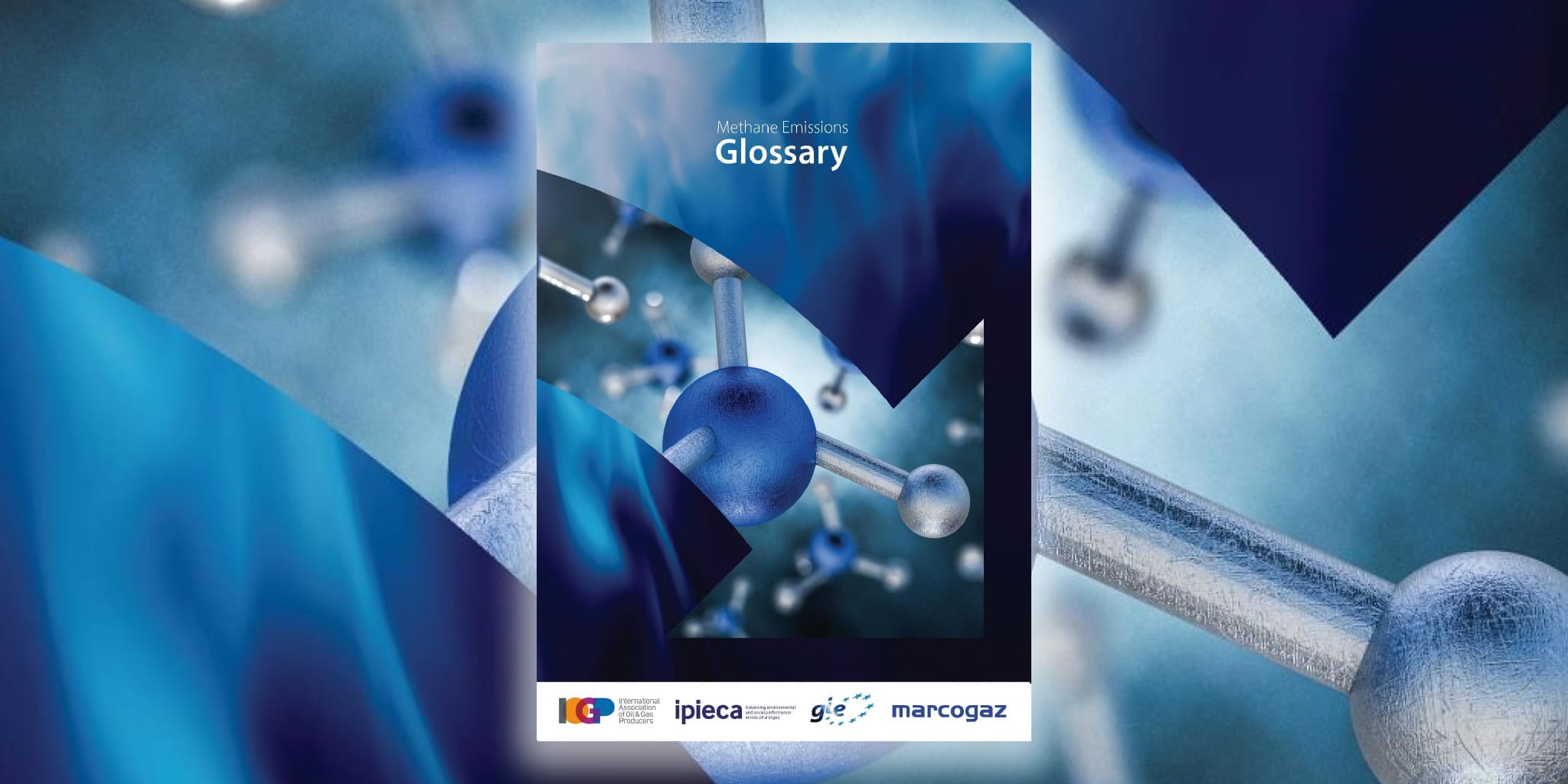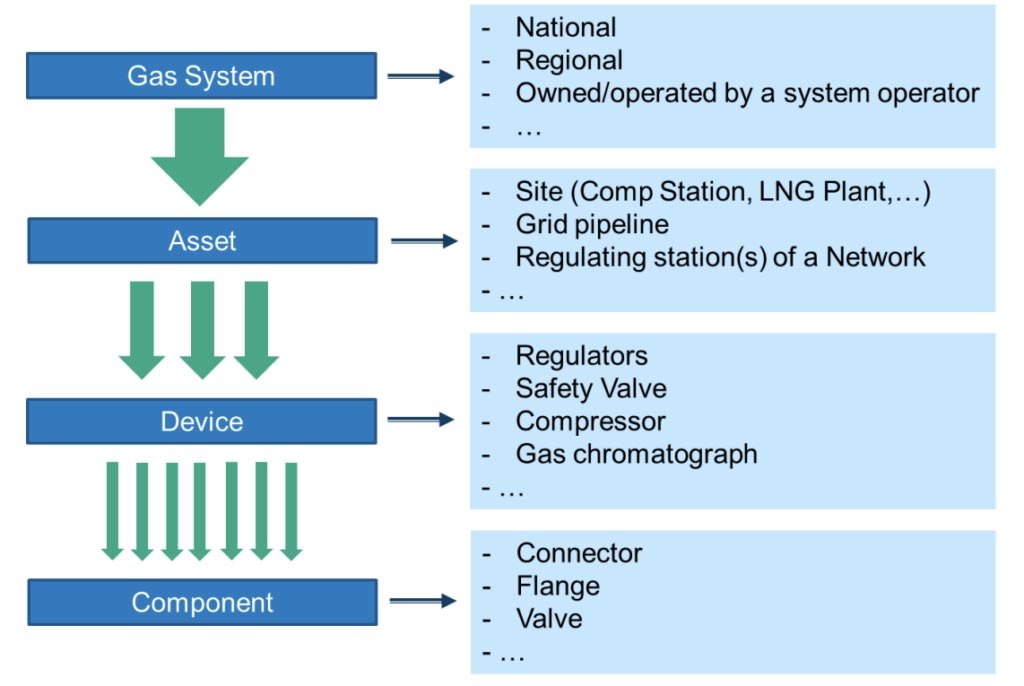Glossary
To support the industry and stakeholders in the use of consistent terminology, Ipieca, IOGP, GIE and MARCOGAZ prepared this methane emissions glossary covering the whole natural gas value chain.
Intended for policymakers and regulators working on methane regulation in Europe, this glossary will be updated to reflect new legislation and technologies.
Upstream - The upstream sector/segment of the natural gas supply chain, which includes activities and/or operations involving the exploration, development, and production. (Note - In some circumstances, this section of the supply chain may also include gas gathering pipelines, gathering compressor stations, and gas processing plants.)
Midstream - The midstream sector/segment of the natural gas supply chain, which includes gas transmission, storage and LNG regasification terminals. (Note - In some documents, the distribution grid and/or the gas-processing plants are considered part of this segment of the supply chain). Downstream/Distribution system - The segment of the natural gas supply chain covering distribution activities delivering gas to end-users.

5 Biomethane production is not part of the segments. Biomethane is typically injected in transmission or distribution networks. LNG/CNG filling stations are sometimes connected to midstream or sometimes to downstream.
6 Liquefaction is in some cases after transmission
7 LNG regasification can also occur in distribution (LNG satellite stations)
(Note - Transmission lines transport natural gas across long distances and occasionally across interstate boundaries. They are connected to the distribution grid via city gate stations and/or pressure regulating stations.
High-pressure gas transport over long distance including pipelines, compressor stations, metering and regulating stations and a variety of above-ground facilities to support the overall system. Underground gas storage and LNG terminals are excluded. Operating pressure is normally equal or greater than 16 bar.)
8 See definition of pressure regulating station.
(Note - The time period for any quoted GWP is important as there are significant differences between 1-year, 20-year and 100-year GWPs; for example, the GWP for methane is understood to range from 25 to 84 depending on the timeline adopted. The time period usually used for GHG inventory reporting is 100 years. The IPCC Assessment Reports provide relevant GWPs for methane and other GHGs.)
References
[1] Directive 2009/73/EC of the European Parliament and of the Council of 13 July 2009
[2] EN-12186 – Gas infrastructure – Gas pressure regulating stations for transmission and distribution – Functional requirements
[3] EN-12327 – Gas infrastructure – Pressure testing, commissioning and decommissioning procedures – Functional requirements
[4] EN-12583 – Gas Infrastructure – Compressor stations – Functional requirements
[5] EN-15446 – Fugitive and diffuse emissions of common concern to industry sectors – Measurement of fugitive emission of vapours generating equipment and piping leaks
[6] GIE & MARCOGAZ Report “Potential ways the gas industry can contribute to the reduction of methane emissions” https://www.gie.eu/index.php/gie-publications/methane-emissions/methaneemission-report-2019/27786-gie-marcogaz-report-for-the-madrid-forum-potentialway-gas-industry-can-contribute-to-the-reduction-of-methane-emissions/file
[7] IPIECA/API/IOGP (2020). Oil and gas industry guidance on voluntary sustainability reporting https://www.ipieca.org/media/5105/ipieca_sustainability-guide_2020_glossary.pdf
[8] IPIECA Methane Glossary http://www.ipieca.org/resources/awareness-briefing/methane-glossary/
[9] ISO 14532 – Natural gas — Vocabulary
[10] JCGM-100 – Evaluation of measurement data – Guide to the expression of uncertainty in measurement. s.l.: Committee for Guides in Metrology (JCGM/WG 1), 2008
[11] MARCOGAZ – Assessment of methane emissions for gas Transmission and Distribution system operators, 2019 https://www.marcogaz.org/app/download/8161672063/WG_ME-485- Assessment+of+methane+emissions+for+gas+Transmission+and+Distribution+system+ operator.pdf?t=1602849054
[12] MARCOGAZ – Guidance for using the MARCOGAZ methane emissions reporting template – DSO, TSO, LNG receiving terminals and UGS https://www.marcogaz.org/app/download/8271109963/WG_ME710.pdf?t=1606988780
[13] MGP Reducing methane emissions: Equipment leaks https://methaneguidingprinciples.org/best-practice-guides/equipment-leaks/
[14] MGP Reducing methane emissions: Identification, detection, measurement and quantification https://methaneguidingprinciples.org/wp-content/uploads/2020/09/ReducingMethane-Emissions_Identification-Detection-Measurement-andQuantification_Guide.pdf
[15] MGP Reducing methane emissions: Transmission, storage, LNG terminals and distribution https://methaneguidingprinciples.org/wp-content/uploads/2020/09/ReducingMethane-Emissions-transmission-storage-LNG-terminals-and-distribution-Guide.pdf
[16] Oil and Gas Methane Partnership Technical Guidance Documents https://ccacoalition.org/en/content/oil-and-gas-methane-partnership-technicalguidance-documents
[17] Regulation (EC) No 715/2009 of the European Parliament and of the Council of 13 July 2009
[18] US EPA – ‘Method 21: Determination of volatile organic compound leaks’

